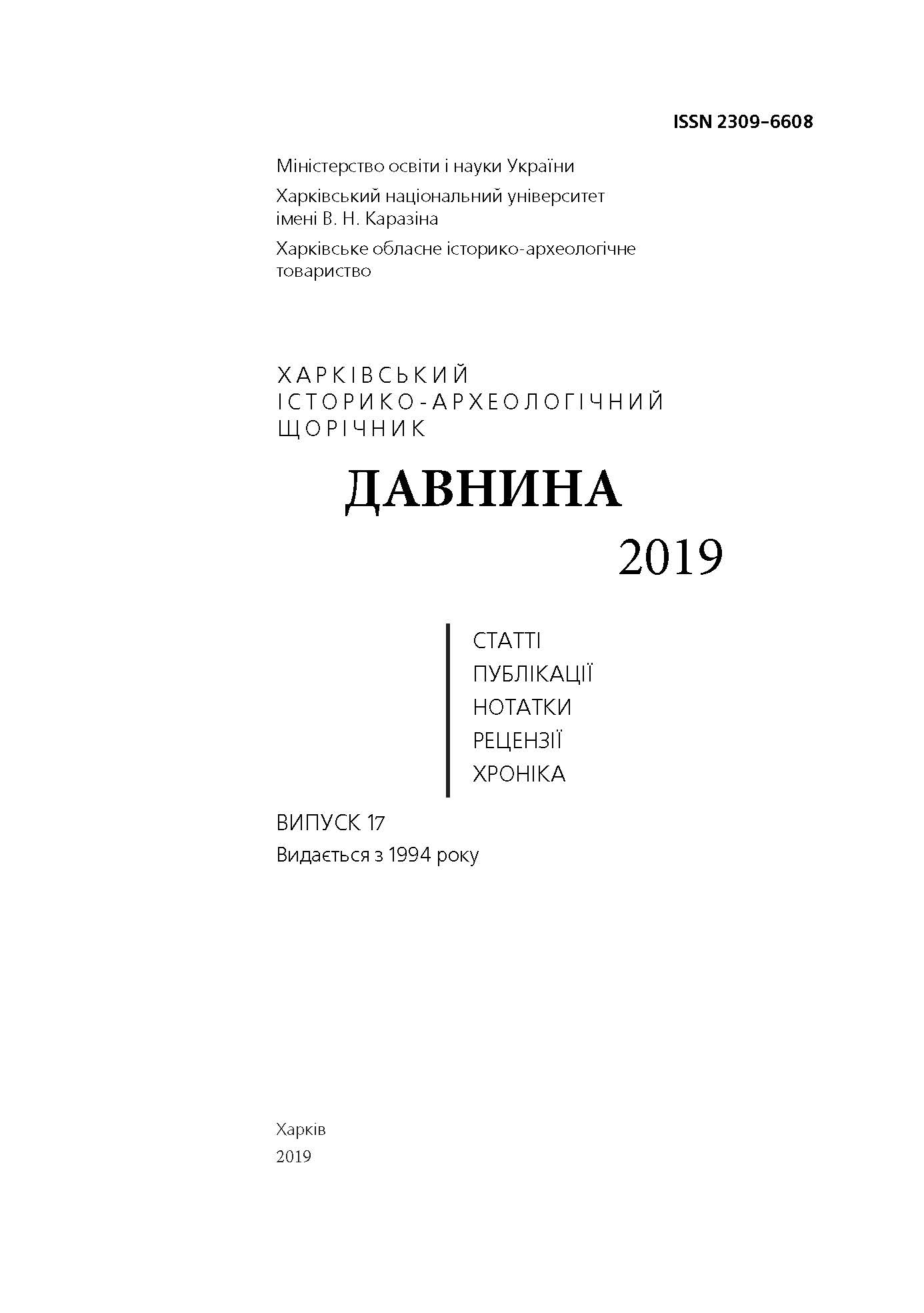Перечитуючи Тітмара Мерзебурзького: lumbarum venereum та інші хиби князя Володимира
Анотація
Стаття присвячена інтерпретації повідомлень Тітмара Мерзебурзького про князя Володимира Святославича. Проведено джерелознавчий аналіз інформації саксонського єпископа про недоліки й гріховні пристрасті “короля Русі”. Образ Володимира — не єдиний негативно змальований серед персонажів хроніки, близьким до нього антигероєм є польський князь Болеслав Хоробрий. Розглянуто полеміку про обставини шлюбу з порфірородною Анною у контексті звинувачень саксонського хроніста щодо “підступного викрадення” князем нареченої. Уточнюються причини анахронізму, допущеного автором хроніки. Акцентовано увагу на дискусії щодо lumbarum venereum як деталі княжого туалету. Спростовано версію про lumbarum як фалічний амулет чи елемент еротичної магії. Йдеться радше про перев’язь, яка мала гамувати плотські пристрасті у контексті візантійської аскетики. Паралелі до свідчення Тітмара можна знайти у візантійській та південнослов’янській агіографії, а також західній та ісламській містичній літературі. Носіння предметів на статевих органах використовувалося як юродивими у візантійській та слов’янській традиції, так і дервішами-каландарі в ісламському світі. Прикметним є образ Св. Франциска Ассізького, що проповідував, маючи лише пов’язку на стегнах. Проте у випадку з князем перев’язь (lumbare) не була розрахована на провокативну демонстрацію, унаочнюючи внутрішнє смирення перед Богом. Привертається увага до топосу про щедрість князя у контексті традицій варварських суспільств раннього середньовіччя. Щедрість та дари під час бенкету були одними з найбільш поціновуваних цінностей володаря як у країнах Скандинавії, так і в Східній Європі.
Завантаження
Посилання
Dölger Fr. 1949: Wer war Theophano. Historisches Jahrbuch 62, 646–658.
Holtzmann R. (Hgb.). 1935. Die Chronik des Bishofs Thietmar von Merseburg und ihre korveier Überarbeitung. MGH SS rer. Germ. 9. Berlin.
Ivanov S. A. 2003: Vizantiyskoe missionerstvo: mozhno li sdelat’ iz varvara khristianina? Moskva (In Russian).
Lavrentievskaya letopis’ 1926: Polnoe sobranie russkikh letopisei [Full Collection of Russian Chronicles] 1. Leningrad (In Russian).
Litvina A. F., Uspenskiy F. B. 2018: Pokhvala shchedrosti, chasha iz cherepa, zolotaya luda… Kontury russko-variazhskogo kul’turnogo vzaimodeistviia. Moskva (In Russian).
Musin A. E. 2016: Knyaz’ Vladimir Sviatoy i kultura Kievskoy Rusi glazami Titmara Merzeburgskogo. Knyazha doba: istoriya i kultura [Princely era: History and Culture] 10, 165–198 (In Russian).
Nazarenko A. V. 1993: Nemetskie latinoyazychnye istochniki IX – XI vekov. Teksty, perevod, kommentariy. Moskva (In Russian).
Nazarenko A. V. 2001: Drevnyaya Rus’ na mezhdunarodnykh putyakh. Mezhdistsyplinarnye ocherki kulturnykh, torgovykh, politicheskikh sviazey IX – XII vekov. Moskva (In Russian).
Nikitenko N. M., Vereshchagina N. V. 2009: Problema imyanarecheniya knyazya Vladimira v svete novykh issledovaniy. Medievistyka [Medieval Studies] 5, 6–30 (In Russian).
Poppe A. V. 2008: Vladimir Sviatoi. U istokov tserkovnogo proslavleniya. Fakty i znaki. Issledovaniya po semiotike istorii [Facts and Signs. Researches on Semiotics of History] 1, 40–107 (In Russian).
Poppe A., Poppe D. 1976: Dziewosleby o porphirogenetke Anne. In: Cultus et cognitio. Warsawa, 451–468.
Schramm P. E. 1924: Kaiser, Basileus und Papst der Ottonen. Historische Zeitschrift 129, 424–475.
Sverdlov M. B. 1976: Izvestiya o Rusi v khronike Titmara Merzeburgskogo. In: Drevneyshye gosudarstva na territorii SSSR. Materialy i issledovaniya. 1975 god [Ancient States on the Territory of USSR. Materials and Researches], 102–112 (In Russian).
Vereshchagina N. V. 2017: Dve Eleny v istorii Rusi. Scriptorium nostrum 2(8), 386–407 (In Russian).




